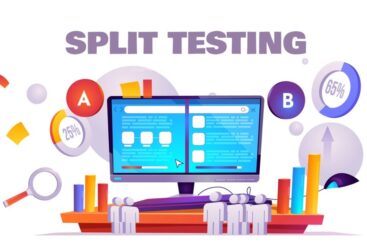In the dynamic realm of digital marketing, a well-crafted content calendar is the linchpin that ensures consistent, strategic, and impactful content creation. The process of building a content calendar involves more than simply marking dates on a spreadsheet. It’s a strategic endeavor that aligns your brand’s goals with the needs and preferences of your audience. In this comprehensive guide, we delve into the art and science of building a content calendar that not only works but becomes a cornerstone of your content mastery.
Establishing Clear Objectives: The Foundation of Your Content Calendar
A content calendar is not just a scheduling tool; it’s a strategic roadmap for achieving specific objectives. Before diving into the calendar creation process, it’s crucial to establish clear and measurable goals. Ask yourself:
- What are the primary objectives of our content strategy?
- Are we focusing on brand awareness, lead generation, or community engagement?
- How will we measure the success of our content efforts?
By defining these objectives, you set the stage for a content calendar that aligns with your broader business goals.
Knowing Your Audience: Tailoring Content for Maximum Impact
A content calendar is only effective if it resonates with your target audience. Knowing your audience intimately is a prerequisite for creating content that captures attention, sparks interest, and drives action. Consider:
- What are the demographics, preferences, and pain points of your audience?
- How does your audience consume content, and on which platforms?
- What types of content are likely to engage and resonate with them?
Answering these questions provides the insights needed to tailor your content calendar to the specific needs of your audience.
Content Mapping: Aligning Topics with Audience Needs and Business Objectives
With objectives and audience insights in hand, it’s time to map out the types of content that will populate your calendar. A strategic content map aligns topics with both audience needs and business objectives. Consider:
- How can your content address the challenges or interests of your audience?
- Which types of content (blog posts, videos, infographics) are most suitable for conveying your messages?
- How can your content contribute to achieving your broader business goals?
A well-defined content map ensures that your calendar serves as a dynamic tool for achieving specific outcomes.
Selecting the Right Tools: Streamlining the Content Calendar Process
The choice of tools plays a significant role in the efficiency and effectiveness of your content calendar. Numerous content management and scheduling tools are available, each with its features and benefits. Consider:
- Does your team prefer collaborative tools like Google Calendar or project management platforms such as Asana or Trello?
- Are there specialized content calendar tools that integrate seamlessly with your existing workflow?
- How can the chosen tools facilitate collaboration, streamline scheduling, and provide analytics for performance assessment?
Selecting the right tools ensures a smooth and organized content creation and distribution process.
Establishing a Realistic Posting Schedule: Consistency is Key
Consistency is a hallmark of successful content strategies. Whether you’re posting daily, weekly, or bi-weekly, establishing a realistic posting schedule is crucial. Factors to consider include:
- How frequently can your team create high-quality content without sacrificing quality?
- Are there specific times or days when your audience is most active and receptive to your content?
- How can you maintain a balance between frequency and quality to keep your audience engaged?
A consistent posting schedule builds anticipation and fosters audience loyalty.
Incorporating Variety: Keeping Content Fresh and Engaging
A diverse range of content keeps your audience engaged and prevents content fatigue. The content calendar should reflect this diversity by incorporating various content types, such as:
- Blog posts that provide in-depth insights or solutions.
- Visual content like infographics or videos for a more engaging experience.
- Interactive content such as quizzes or polls to encourage audience participation.
Variety not only caters to different preferences but also ensures your brand remains dynamic and interesting.
Aligning with Seasonal and Industry Trends: Staying Relevant
A content calendar that adapts to seasonal and industry trends demonstrates agility and relevance. Consider:
- How can your content capitalize on seasonal themes or holidays?
- Are there upcoming industry events or trends that your content can align with?
- How can your brand contribute to ongoing conversations in your industry?
Staying attuned to trends ensures that your content remains timely and resonant.
Incorporating Evergreen Content: Building a Sustainable Foundation
While staying current is essential, incorporating evergreen content provides a sustainable foundation for your content calendar. Evergreen content:
- Addresses timeless topics that are always relevant to your audience.
- Continues to attract organic traffic over an extended period.
- Acts as a resource that can be shared repeatedly, extending its lifespan.
A balance between timely and evergreen content creates a robust and enduring content strategy.
Collaborative Planning: Harnessing the Power of Team Input
A content calendar is a collaborative tool that benefits from the input of various team members. Encourage collaboration by:
- Holding regular content planning meetings to gather input from different departments.
- Utilizing collaborative tools that allow team members to contribute ideas, insights, and feedback.
- Ensuring that everyone understands and aligns with the overarching goals of the content strategy.
Collaborative planning enhances creativity, efficiency, and the overall effectiveness of your content calendar.
Flexibility and Adaptability: Responding to Changing Dynamics
In the dynamic landscape of digital marketing, flexibility is essential. Your content calendar should be adaptable to changes in:
- Audience preferences and behaviors.
- Industry dynamics and trends.
- Unexpected events or opportunities.
A flexible calendar ensures that your content remains relevant and responsive in an ever-evolving digital ecosystem.
Performance Metrics and Analysis: Iteratively Optimizing Your Calendar
Building a content calendar is not a one-and-done task; it’s an ongoing process of optimization. Regularly assess performance metrics such as:
- Engagement rates, including likes, comments, and shares.
- Conversion rates and lead generation attributed to specific pieces of content.
- Website traffic and the impact of content on your overall digital presence.
Iterative optimization based on analytics ensures that your content calendar continues to evolve and deliver meaningful results.
Reviewing and Updating: Keeping Your Calendar Current
Regular reviews and updates are essential to keeping your content calendar current and effective. Schedule periodic reviews to:
- Assess the performance of recent content and identify successes and areas for improvement.
- Align upcoming content with any changes in business objectives or audience dynamics.
- Incorporate feedback from team members and audience interactions to refine your strategy.
A dynamic and regularly updated content calendar is a living document that evolves with your brand’s journey.
Integration with Other Marketing Channels: A Holistic Approach
To maximize the impact of your content calendar, integrate it seamlessly with other marketing channels. This holistic approach ensures that your messaging is consistent across platforms, reinforcing your brand’s identity and message. Consider:
- How can your content calendar align with email marketing campaigns?
- Are there opportunities to integrate social media promotions with upcoming content releases?
- Can your content be repurposed for use in webinars, podcasts, or other channels?
Integration fosters a unified marketing strategy, amplifying the reach and effectiveness of your content.
Budget Allocation: Ensuring Resource Optimization
A well-crafted content calendar accounts for budget allocation, ensuring that resources are optimized for maximum impact. Consider:
- How can you allocate budget resources for content creation, promotion, and distribution?
- Are there opportunities for cost-effective content collaborations or partnerships?
- Can analytics help identify high-performing content and inform future budget decisions?
Strategic budget allocation enhances the efficiency and sustainability of your content marketing efforts.
Audience Feedback: Closing the Loop for Continuous Improvement
Audience feedback is a valuable asset in the content creation process. Actively seek feedback through:
- Social media polls, surveys, and comments.
- Analytics that reveal audience behavior and preferences.
- Direct interactions with your audience through customer service channels.
By closing the loop with audience feedback, you gain insights that inform iterative improvements to your content calendar and overall strategy.
Conclusion: Transforming Ideas into Strategic Action
Building a content calendar that works is not just a logistical task; it’s a strategic undertaking that transforms ideas into tangible actions. By establishing clear objectives, knowing your audience, incorporating variety, and staying flexible, your content calendar becomes a powerful tool for content mastery. It evolves from a schedule of dates to a dynamic roadmap that guides your brand toward its digital marketing goals.







